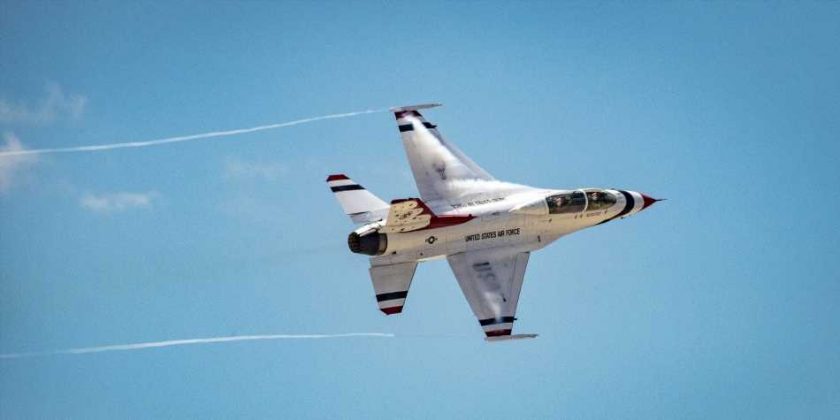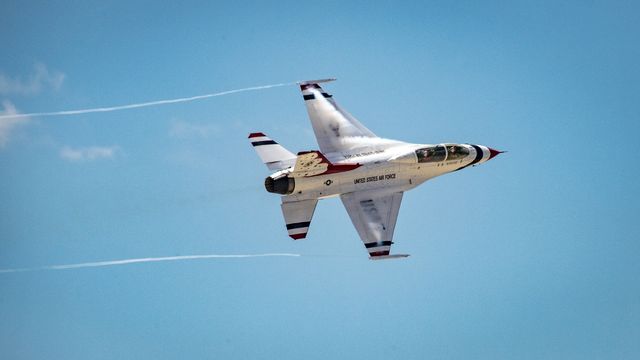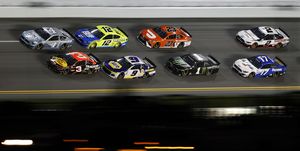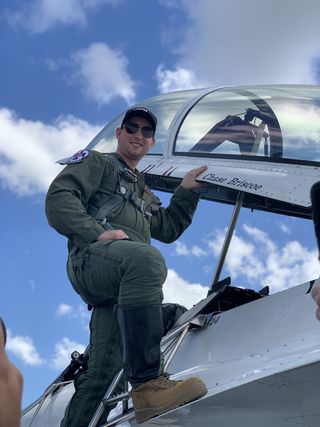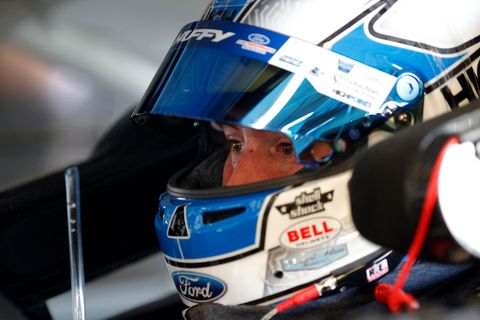It’s pretty much a given that professional racecar drivers don’t make good passengers. The loss of being in control is a frighting prospect to someone used to being behind the wheel. That much is true for rookie NASCAR Cup driver Chase Briscoe. The newly appointed driver of the No. 14 Stewart-Haas Racing Ford is just like any of his peers. However, this past week he was actually glad to be a passenger.
Briscoe was invited to take to the air with the US Air Force Thunderbirds, the military demonstration team that flies F-16 fighter jets all over the country and will perform the flyover for Sunday’s Daytona 500, which will also be Briscoe’s first Daytona 500 start.
“I would rather be in control if I knew what I was doing,” Briscoe said. “I had no idea how to get that thing to take off the ground or anything. So, I definitely wanted to be the passenger.”
Briscoe admitted he was nervous after being strapped into a multimillion-dollar fighter jet. However, he added he was glad to have the experience.
“You never know what your body’s going to do or that G load and all these things,” he said. “I’m so glad I put those fears aside because it was honestly the coolest, most incredible experience I’ve ever had in my life. And something that, I mean, I will cherish forever.”
“I think I talked more about that the past day than I have anything about the Daytona 500,” he added chuckling. “Just because I’ve been telling everybody about how fun it was. Cause it was literally such an amazing opportunity. I mean, it was honestly too cool to even put into words, the feeling that I had when we were going through some of the turns and just the maneuvers that we were doing, it was just an unbelievable time.”
Briscoe learned that fighter jets and racecars have a great deal in common.
“My pilot, when we were going over our pre-flight briefing was talking about how it’s really similar to the race teams,” he said. “You know, they have a crew chief as well, just like we do. They have mechanics at work on the plane, just like we do on the racecar. And he’s kind of a driver and, there’s all that preparation that goes into it: ‘this is what we’re going to doon this flight to have a plan, you know, trying to execute that plan’. There’s just so many things that are so similar. That was one thing that was really cool for me. The preparation and the attention to detail that we have on the race cars, (it’s) the same, obviously that they have over there. “
During the hour-long flight, Briscoe even had a chance to take the controls for a short moment, something very few non-fighter pilots get to. It made him wish his racecar could respond the same way.
“Yeah absolutely,” he joked. “Obviously, it’s way faster than our race car, but how quick it can maneuver, you know, things that thing is capable of doing is just unbelievable.
“You know, we go to places like a Dover or Bristol, and we talk about the G load on our body and yeah, I mean, it’s, it’s a long time with that G load over and over and over again, but you know, it’s only three or four Gs and it’s just for a brief second.
During his flight however, the F-16 did a turn the resulted in 9-Gs.
“I think they told me my body was at 1800 pounds at that point,” he said. “I mean, you couldn’t even move your finger if you want to do it was just unbelievable. I was amazed at the technology.”
Of course, as is asked of anyone who gets to ride in a fighter jet; Did he hold down his lunch?
“I was good the whole time,” he said without hesitation. “The 9-G turn, I want to say it was around a 13 second corner, and the last, I would say the last very second, second and a half, I could tell my vision was going from color to black and white, which I guess is the first kind of symptom of about to pass out.
“I felt like if we went another five seconds to that corner, I would have probably been really close by the end. But yeah, I was good all the way throughout.”
Source: Read Full Article
